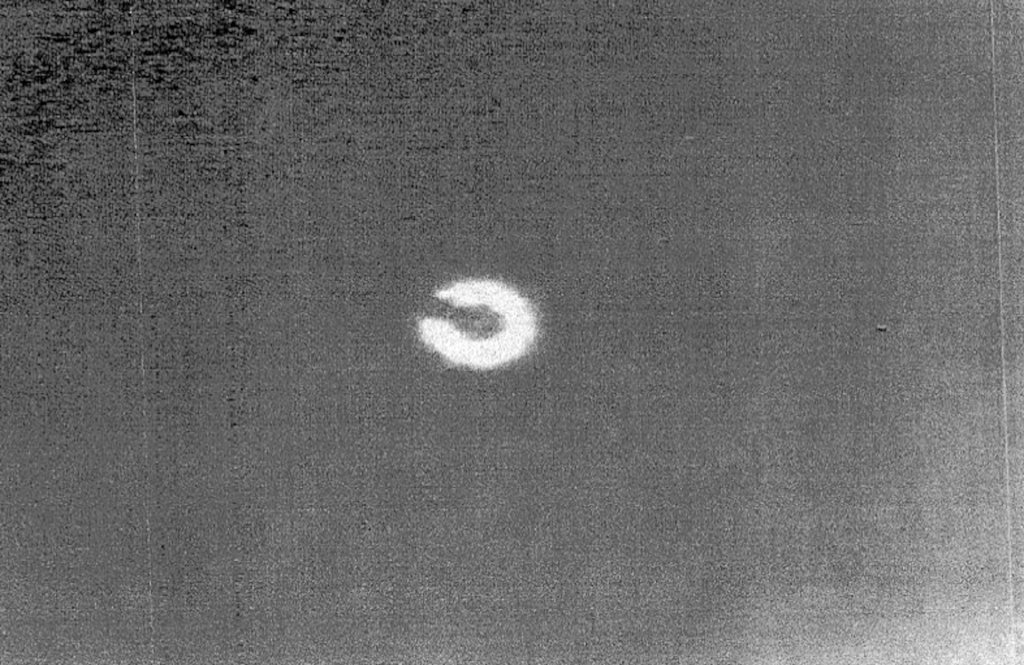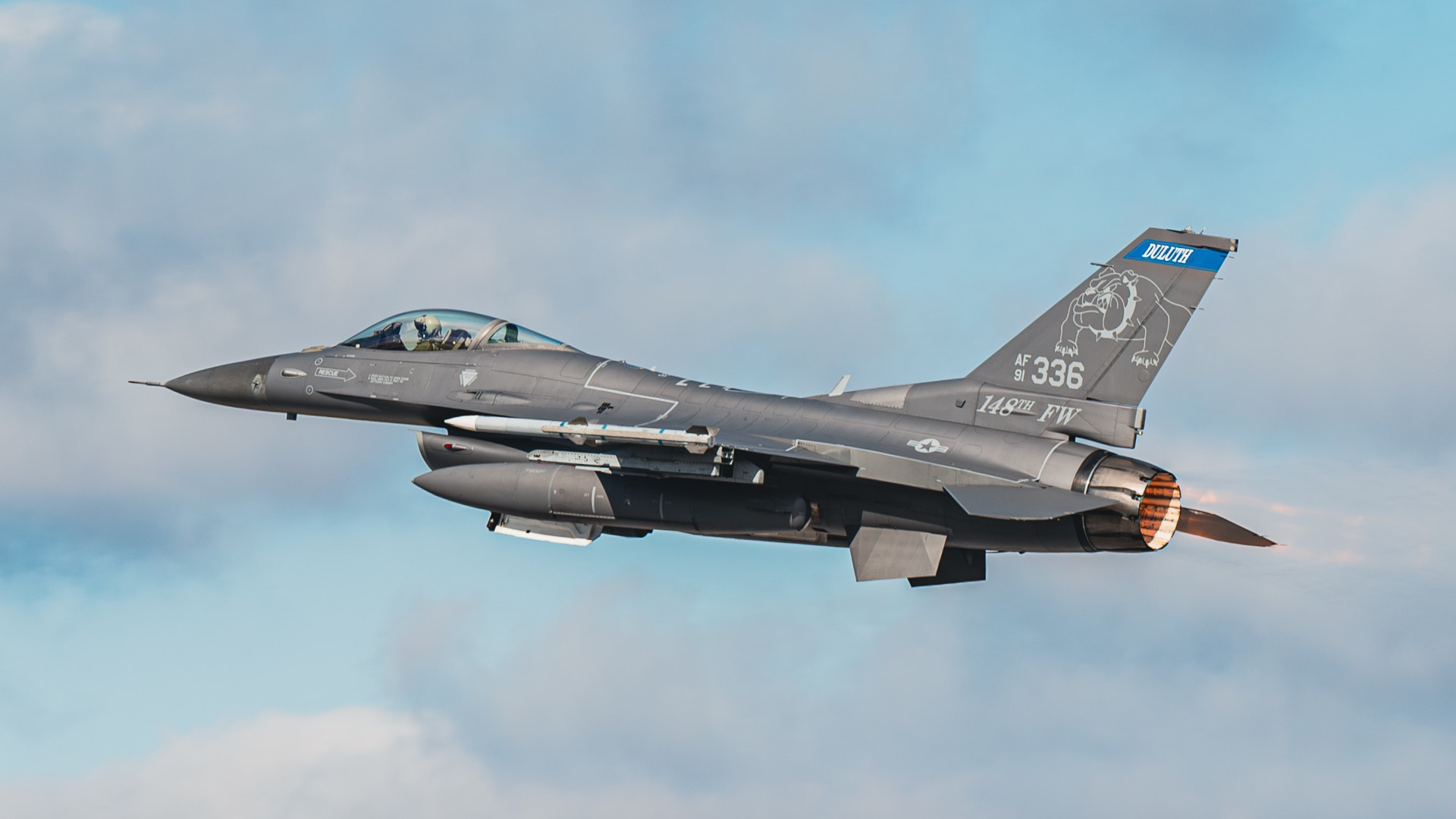The search for clues after a U.S. Air Force F-16 Viper fighter brought down a still-unidentified object over Lake Huron in February 2023 did result in the recovery of debris, it has been disclosed. However, it remains unclear whether or not the wreckage was from that shootdown. The new details continue to raise more questions about the downing of this and two other mystery objects that same month in American and Canadian skies, and why more information has not been made public.
Canada’s CTV News first reported earlier today on the previously unannounced debris recovery, which was part of the search for whatever was left of what had been sailing through the sky above Lake Huron on Feb. 12, 2023. This and other new information in CTV News‘ story comes from a string of emails between Canadian military officials and members of the Royal Canadian Mounted Police (RCMP), as well as a heavily redacted Royal Canadian Air Force (RCAF) report. The records were obtained via a request under Canada’s Access to Information Act, which is similar in many respects to the U.S. Freedom of Information Act (FOIA), but is accessible only to Canadian citizens.

A total of three unidentified objects soaring in U.S. and Canadian airspace were brought down by U.S. Air Force jets in as many days in February 2023. The Lake Huron shootdown followed ones in the skies off the coast of Alaska and over Canada’s Yukon Territory on Feb. 10 and 11 of that year. This all also came after the downing of a Chinese spy balloon, which had been passing over parts of the United States and Canada for days, off the coast of South Carolina on Feb. 4.
Previous official statements about and audio recordings from the Lake Huron shootdown have described the object as having an octagonal shape with strings hanging from it, along with may have been a small, dark-colored payload suspended beneath.

“Debris was discovered last week (reported I believe through CAF [Canadian Armed Forces] comms line) and the RCMP now has possession of it. I understand there is both material and a module,” Mark Flynn, the RCMP’s deputy commissioner for Federal Policing, wrote in an email to the CAF’s Brig. Gen. Eric Laforest, then-strategic joint staff director of general operations, on March 13, 2023. “The module is from a company who sells weather monitoring equipment. It will be analyzed to determine if there is anything unusual with it but I suspect not given the size. Whether or not it is from the shoot down is uncertain.”
It’s also interesting to note here that a Canadian Strategic Joint Staff briefing slide from May 2023 explicitly mentions “debris near, or in Canadian waters” following the Lake Huron shootdown but provides no further details, at least that are unredacted. Independent researcher Steve Te shared slides from this briefing, which was given during a meeting between members of the CAF and the country’s Office of the Chief Science Advisor in relation to the Sky Canada Project, on X last week. Launched in 2022, Sky Canada has been working “to study how Unidentified Aerial Phenomena (UAP) reports from the public are managed in Canada and to recommend improvements.”
“Following reports of unidentified aerial objects observed in the Great Lakes area and elsewhere in North America, multiple searches were conducted by the RCMP with the support of the Canadian Armed Forces,” the RCMP told CTV News in response to questions about the new documents it obtained. “Debris has been recovered from the shores of Lake Huron but after careful analysis, it was determined not to be of national security concern.”
The outlet says the RCMP declined to confirm or deny whether the debris was ultimately determined to be from whatever was brought down over Lake Huron.
The redacted RCAF report that CTV News obtained, which is dated Feb. 16, 2023, further suggests the object might have been a weather balloon launched from a U.S. National Weather Service radar station in Michigan, as seen below. This would align with the RCMP’s subsequent recovery of a weather monitoring module.

The report from the RCAF also reiterates a widely reported theory that the object shot down separately over the Yukon was a so-called “pico” balloon, which amateur radio enthusiasts regularly launch across North America. That document mentions a “poss[ible] stratospheric balloon transparent outer and mylar or other material inner,” as well, but it is not entirely clear what object this might be referring to.


In September, CTV News published the first known image of the Yukon object, which Canadian authorities have also referred to as Unidentified Aerial Phenomena (UAP) 23, which was also released as part of an Access to Information Act request. You can find The War Zone’s analysis of the image, seen below, here.

Whether or not what the RCMP found on the Canadian side of Lake Huron is related to the shootdown on Feb. 12, 2023, the disclosure raises significant new questions. Before now, neither U.S. authorities nor their Canadian counterparts had confirmed recovering anything in searches following the downing of the three still-unidentified objects in the skies over those countries that month. The owners and/or operators of those objects, and whatever their purposes might have been, remain unknown, at least publicly.
“The location chosen for this shoot down afforded us the opportunity to avoid impact to people on the ground while improving chances for debris recovery. There are no indications of any civilians hurt or otherwise affected,” the Pentagon said in a statement following the shootdown. “We did not assess it to be a kinetic military threat to anything on the ground, but assess it was a safety flight hazard and a threat due to its potential surveillance capabilities. Our team will now work to recover the object in an effort to learn more.”
“After conducting an extensive search in the Lake Huron area with the assistance of the Canadian Coast Guard and other domestic and international partners, a decision was reached to suspend the search due to several factors including deteriorating weather and the low probability of recovery,” RCMP then said in a press release on Feb. 16, 2023. “This investigation is in its very early stages and will take time. We will share additional information when it becomes available as the recovery efforts and investigation unfold.”
This is the latest in a string of serious transparency questions to emerge about these incidents. CTV News obtained the UAP 23 image along with emails showing a deliberate decision to withhold its release despite an initial push to do so. Last year, the outlet published another internal Canadian government memo that prompted discussion about what Canadian and U.S. authorities might or might not know about the three objects downed in 2023, as well as other UAPs the two countries had previously monitored in their airspace.

On the U.S. military side, promises to release imagery from and other information about the February 2023 shootdowns have so far gone unfulfilled. This, in turn, has fed into still-unsubstantiated accusations of more active coverups within the U.S. government, including by the All-domain Anomaly Resolution Office (AARO). Established in 2022, AARO’s mission is to be a focal point for collecting data about UAPs and investigating reported sightings, but whether it is adequately resourced and authorized to do so has been questioned in the past.
The possibility that a U.S. Air Force F-16 shot down a U.S. government weather balloon over Lake Huron in February 2023 also highlights separate concerns about the ability of American and Canadian authorities to monitor the airspace above their respective countries. The Chinese spy balloon episode that month prompted the U.S. military to acknowledge what it described as a “domain awareness gap.” American officials said at the time that immediate steps had been taken to rectify that deficiency, including changing data-collection parameters on various air defense radars, and that more action on that front was coming.
AARO notably just released new details yesterday about a sensor suite called GREMLIN that it has acquired specifically to help collect data on UAP sightings, which you can read about here.

Still, even before the February 2023 incidents, a worrisome trend of encounters with aerial objects – many assessed to be drones, as well as balloons and other lighter-than-air craft – over and around the United States had already emerged. This has only continued since then, with a series of still-unexplained and unauthorized drone flights over Langley Air Force Base in Virginia over the course of several weeks in December 2023, now becoming a national cause célèbre. The War Zone was the first to report on the Langley drone incursions and has otherwise long been at the forefront of reporting on these issues. In 2021, we laid out a detailed case for how a portion of sightings of UAPs (or Unidentified Flying Objects, or UFOs, as they have been more commonly called in the past) have very likely been platforms operated by adversaries or potential adversaries for surveillance and other malign purposes.
Questions about the adequacy of U.S. domestic air defense capabilities, especially when it comes to countering the growing threat of drones, an area where the U.S. military continues to lag behind, are also now more fully entering the public consciousness.
In the United States, members of Congress are very actively pushing for greater transparency regarding UAPs and related issues, in general.
When it comes to the trio of shootdowns in February 2023, details do now look to be steadily, if not slowly, trickling out from the Canadian side, though still not proactively. In the meantime, definitive assessments about what those objects were, especially the one downed off the coast of Alaska that remains the most mysterious, and who might been operating them are still elusive.
Contact the author: joe@twz.com
